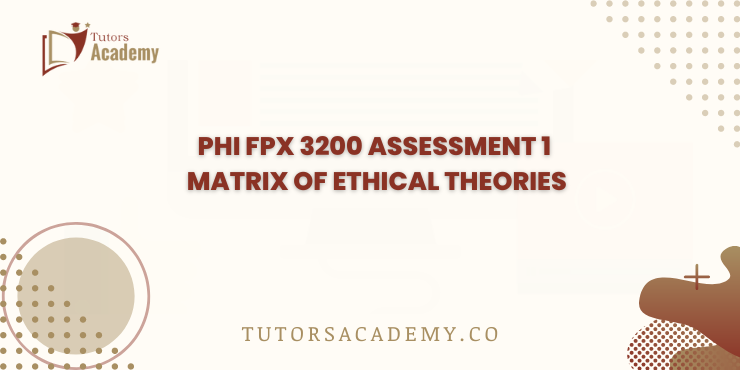
- PHI FPX 3200 Assessment 1 Matrix of Ethical Theories.
Matrix of Ethical Theories
| Ethical Theory | Decision Criteria | Your Own Example | Strengths | Weaknesses | Citation |
| Utilitarianism | Maximize overall happiness or minimize suffering. | Allocating a limited budget to a health program that benefits the most people, even if some individuals get less care. | Promotes the greatest good for the greatest number, practical for decision-making. | May sacrifice individual rights or justice for overall benefits. | (Crisp, R. 2021). Utilitarianism. Routledge. |
| Kantian Ethics | Follow moral rules or duties regardless of the consequences. | A nurse adheres to patient confidentiality and does not disclose private information, even if revealing it could prevent harm to others. | Provides clear, consistent moral guidelines; respects individual rights. | Can be rigid and ignore the context or consequences of actions. | (Wood, A. 2020). Kantian Ethics. Cambridge University Press. |
| Ross’s Ethics | Follow multiple moral duties (e.g., fidelity, reparation, justice) based on the context. | Deciding to prioritize patient care over administrative duties because it’s the most pressing moral obligation in a specific situation. | Flexible and considers multiple duties; context-sensitive. | Can lead to conflicting duties and difficult decision-making in complex situations. | (McNaughton, D., & Rawling, P. 2020). Ross’s Moral Philosophy. Oxford University Press. |
| Natural Law Ethics | Act in accordance with natural moral laws or human nature; achieve the common good. | A healthcare provider chooses not to perform a procedure that is against their belief in preserving life, even if it’s requested by a patient. | Aligns with moral intuition and common good; promotes human flourishing. | May be influenced by cultural or religious biases; can be difficult to apply universally. | (Hittinger, R. 2019). The First Grace: Rediscovering the Natural Law in a Post-Christian World. St. Augustine’s Press. |
References
Bowen, R. A. R. (2020). Ethical and organizational considerations for mandatory COVID-19 vaccination of health care workers: A clinical laboratorian’s perspective. Clinica Chimica Acta, 510(510), 421–422.
https://doi.org/10.1016/j.cca.2020.08.003
Concannon, T. W., Grant, S., Welch, V., Petkovic, J., Selby, J., Crowe, S., Synnot, A., Greer-Smith, R., Mayo-Wilson, E., Tambor, E., & Tugwell, P. (2019). Practical guidance for involving stakeholders in health research. Journal of General Internal Medicine, 34(3), 458–463.
https://doi.org/10.1007/s11606-018-4738-6
Johnston, K. A., & Lane, A. B. (2019). An authenticity matrix for community engagement. Public Relations Review, 45(4), 101811.
https://doi.org/10.1016/j.pubrev.2019.101811
Kaplan, B. (2020). Revisiting health information technology ethical, legal, and social issues and evaluation: Telehealth/Telemedicine and COVID-19. International Journal of Medical Informatics, 143(1).
https://doi.org/10.1016/j.ijmedinf.2020.104239
PHI FPX 3200 Assessment 1 Matrix of Ethical Theories
Lee, D. (2020). Impact of organizational culture and capabilities on employee commitment to ethical behavior in the healthcare sector. Service Business, 14(1), 47–72.
https://doi.org/10.1007/s11628-019-00410-8
Love, E., Salinas, T. C., & Rotman, J. D. (2018). The ethical standards of judgment questionnaire: Development and validation of independent measures of formalism and consequentialism. Journal of Business Ethics, 161(1), 115–132.
https://doi.org/10.1007/s10551-018-3937-8
Popa, E. O., van Hilten, M., Oosterkamp, E., & Bogaardt, M.-J. (2021). The use of digital twins in healthcare: Socio-ethical benefits and socio-ethical risks. Life Sciences, Society and Policy, 17(1).
https://doi.org/10.1186/s40504-021-00113-x
Resnicow, K., Catley, D., Goggin, K., Hawley, S., & Williams, G. C. (2021). Shared decision making in health care: Theoretical perspectives for why it works and for whom. Medical Decision Making, 42(6).
